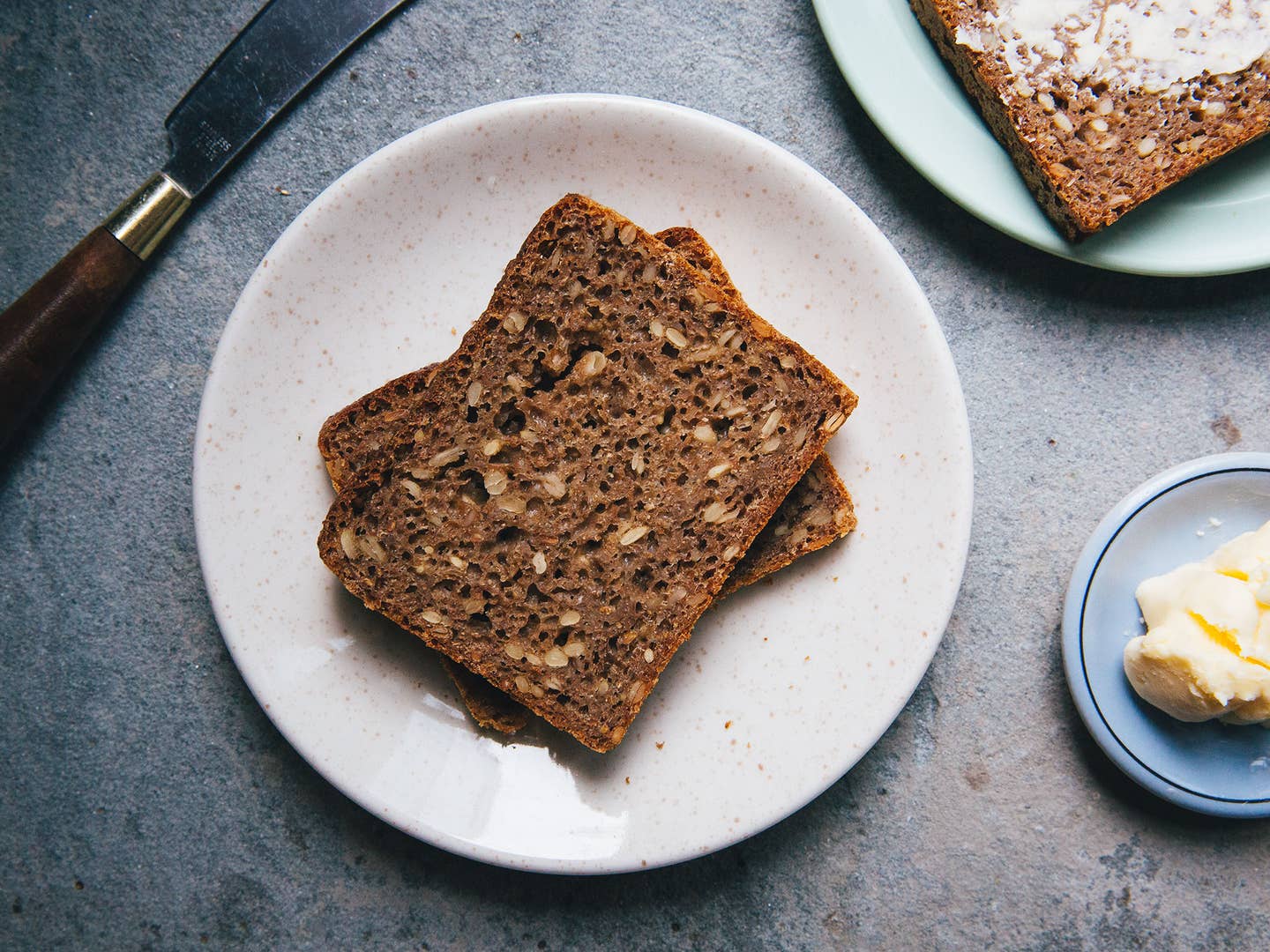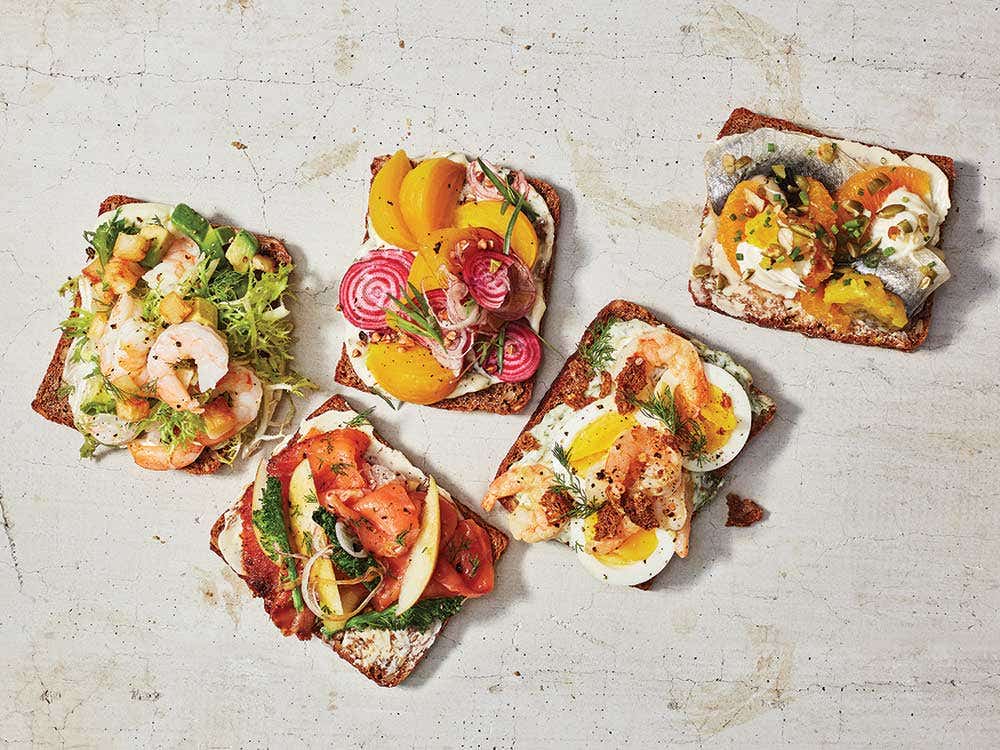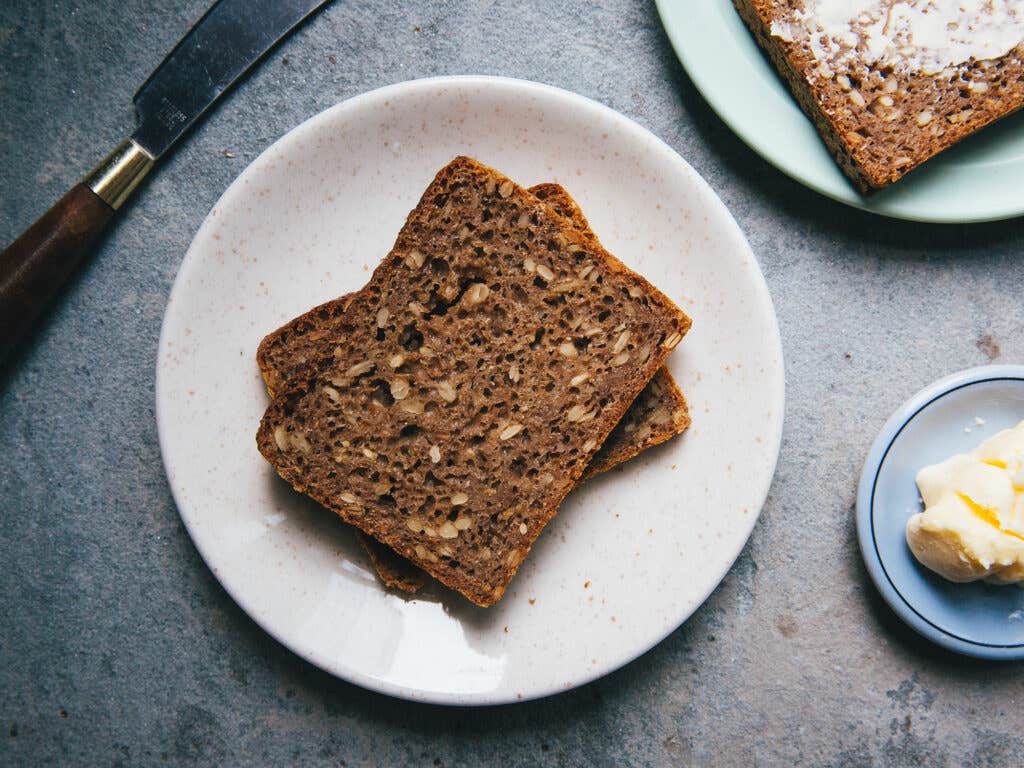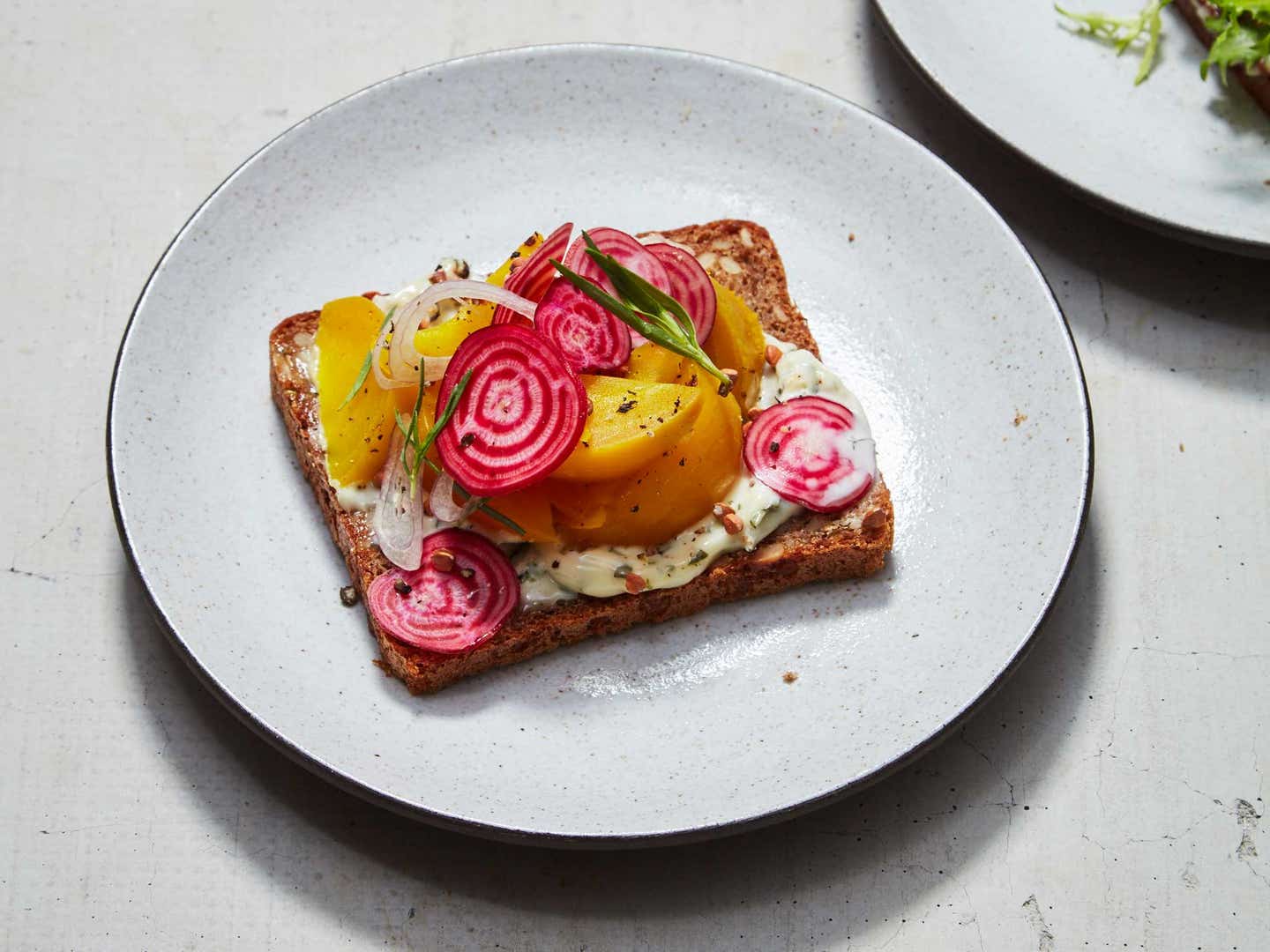
How to Make Real-Deal Danish Rye Bread, the Heartiest Loaf of Them All
Loaded with seeds and unapologetically twangy, this is the ultimate whole grain bread
So many of us were raised with a woefully narrow understanding of rye bread. Even in cities flush with Jewish and Eastern European delis, most of the soft, caraway-flecked rye and pumpernickel loaves that sandwich slices of pastrami are shadows of the real thing. To say nothing of finding a proper brick of Danish rugbrød.
Just barely leavened, dense in flavor as well as texture, twangy and sour and full of seeds and cracked rye berries, the dark crumb of rugbrød is like nothing else. And when Andrew Richdale returned from his mission to become Danish in Copenhagen, he brought back some of the real thing. I've since been tinkering in the kitchen to master making it at home.
Rye is a tricky grain. It contains a bit of gluten, but not nearly as much as wheat, and while those springy strands of protein have fallen out of favor lately, they are essential to most bread recipes. That squishy deli rye is mostly made from wheat flour that has been supplemented with a small percentage of rye for color and a handful of earthy caraway seeds. Without the addition of plenty of gluten, it is impossible to transform rye flour into those soft, familiar sandwich loaves. 100% rye bread is certainly possible and it is quite popular in parts of Scandinavia and Germany, but it is a very different beast.

A slow mix, long fermentation, and lengthy bake time are all necessary for turning gummy, coarse rye meal into a proper loaf. An old German word for this type of bread, "pumpernickel," comes from the root words for "flatulence" and "goblins"– essentially "devil's farts" – and a long fermentation is said to improve the grain's...indigestibility. While wheat-based breads are at their best still warm and crackling from the oven, rugbrød needs at least several hours to cool and set up before slicing. It then also keeps at peak for days.
Caraway is rarely included in Nordic rye, though other, nuttier seeds are common; milled rye flour is often beefed up with the addition of whole or cracked rye berries. Certified Master Baker and director of King Arthur Bakery, Jeffrey Hamelman, makes a hearty rugbrød with whole rye and spelt berries, pumpkin seeds, and dark beer. Rhonda Crosson, head baker at Claus Meyer's Great Northern Foodhall, bakes a sturdy loaf loaded with cracked rye kernels and sunflower seeds, and Zack Hall of Clark Street Bread in LA jazzes up his Danish rye with my other favorite incarnation of the grain—whiskey.
If stored properly, Danish rye stays fresh, tender, and flavorful for at least a week. Danish children enjoy sweeter preparations of the chewy bread, either slathered with butter and piled high with shaved chocolate or simmered with beer and spices for a tangy breakfast porridge. When rugbrød does finally begin to dry out, it makes fantastic crispy toast for topping with fish, caviar, or other savory spreads. Andrew wrote about rugbrød's importance to Denmark's cuisine and culture, explaining that "many a chef told me that this nutty, fermented Danish rye, sometimes dense enough to double as a weapon, is almost synonymous with the Danish national identity. Many don't consider open-faced smørrebrød sandwiches to be true unless they're supported by rye."
If you’re interested in making your sandwiches—or yourself—a little bit more Danish, rugbrød is a good place to start. But these things can’t be rushed! Rugbrød is a labor of love and while the ingredients are inexpensive, the recipe takes time and practice to perfect. Don’t rush any of the steps and expect to spend plenty of time for...
Making the starter. The first flavor that hits you when you bite into a slice of rugbrød is its bracing acidity – the result of a rye starter and a slow-fermentation. While plenty of bakeries will share a scoop of their starter to jump-start one of your own, making one from scratch is easier than you think. Give it a full week of daily feedings to get it up to full strength before baking with it.
Many home recipes—including ours—also use a small percentage of dry instant yeast. This added leavening acts as insurance against irregularities in home starters.
Soaking your grains. Whole or cracked grains will take longer to fully hydrate than fully milled flour. For tender grains with just a a bit of "al dente" chew, give them a good soak ahead of mixing your dough.
Fermenting the dough. Don't rush it! Take the suggested fermentation times with a grain of salt; times can vary wildly due to ambient temperature, humidity and freshness of flour. Trust the recipe cues, not the timer!
Waiting to cut. Resist the urge to cut into warm rugbrød. Rye needs six to eight hours to set up after baking and if you cut it too soon, it will be unpleasantly gummy. One it sets up, though, It ages marvelously and will stay moist and fresh for several days. Store at room temperature in a breadbox or wrapped in paper (can mold if wrapped in plastic), or double-wrapped tightly in plastic and frozen for up to a month.

Keep Reading
Continue to Next Story











